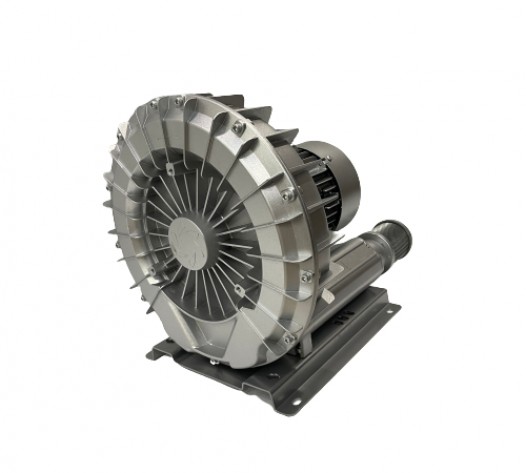Blower generally uses high pressure to produce large volumes, unlike a fan. Blower; They are installation equipment that helps ensure the transfer of emissions at high flow rate and low pressure in environments exposed to emissions, and enables the fan to rotate with the force it receives from the engine. Depending on the method of use, they are used to perform the inhalation process. The fans inside these equipment rotate and draw the air in the suction section. The drawn-in air is then pushed to the outlet side by air transfer. The wings included in this system are designed with gaps so that they do not come into contact with the body or each other while turning. At this point, fine balance checks are made to adjust the fan and lobe. In this way, the accumulation of unwanted substances on the wing and body can be prevented. At this point, one must be very careful, because excessive dust accumulation here may reduce the performance level of the machine. They are found indirectly, if not directly, in almost every field of industry. Because this equipment provides long-term use in all areas where high air flow is needed. The temperature and humidity of the place where the blowers will operate must be taken into consideration.
Considering the operating pressure, selections with a margin of at least 15% should be made.

Blowers have their own principles. In line with these principles, blowers create vacuum by evacuating the gases in the closed system. The principles of blowers, which are very convenient in this regard, can be examined under 3 main headings.
Blowers release the gases inside to the outside. This creates a pressure difference. With this pressure difference, the gas in the environment is directed to a less pressurized area. Thus, the internal pressure is reduced.
Blowers generally use a vacuum zone to collect the gases inside. These areas have a mechanism that collects gases and draws them into the pump.
Blowers compress or draw in gases and release them quickly. This process is usually carried out by mechanisms or mechanical parts located in the blower.
Blowers are divided into two: single stage and double stage.
It is one of the blower types that has two separate fan or rotor sets and can move air or gas in two stages.
These blowers are used where single stage blowers are insufficient.
They are generally used in high capacity air transportation systems, some energy systems and many similar areas.
Single-stage blowers vary in flow rate range from 40-1370, pressures from 0-460 mbar and engine powers from 0.2-18.5 kW.
There are some criteria that should be taken into consideration when choosing a blower.
These criteria;
These types of blowers are generally preferred in applications where medium or low pressure is required. These have many applications in both industrial and commercial fields.
As an example;
These;
Simple Design: It works in a single stage and its design is quite simple. This generally requires less maintenance.
Cost Factor: Contains fewer parts. Generally, they are more cost-effective than multistage blowers.
Flexibility: It has a wide range of applications.
After considering these advantages, areas of use should be determined.
These areas of use are;
Blowers are used to provide air flow and transport air. They work with the support of the engine power they are connected to. The fan in the mechanism sends the vacuumed air to the outlet. In this way, air is pushed to the outlet in the high flow rate range and with the low pressure principle. Blowers provide many benefits. It generally provides oil-free air and gas flow and is very easy to maintain. They do not require much maintenance cost. In addition, they destroy accumulated dirt with pressure. The most important point to consider in the blower to be used is that it is chosen correctly.
When choosing a blower;
Each equipment has its own conditions. First of all, the area to be used must be determined correctly. After measuring the area to be used, the air flow direction must be decided. These blowers should be checked when they are first started and the working balance should be checked for vibration. Attention should be paid to connection bolts, belts and many other features. When choosing a blower, its advantages should also be taken into consideration.
Advantages of these blowers:
When choosing this equipment, it should be known that it is not available and you can choose These conditions should be taken into consideration when starting.